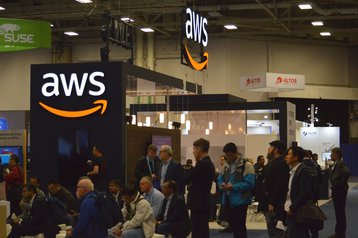Amazon Web Services has a new instance, P2, that is aimed at applications that require “massive parallel floating point performance.”
P2 uses up to 8 Nvidia Tesla K80 Accelerators, each running a pair of Nvidia GK210 GPUs, which allows for up to 192GB of combined video memory, 40,000 parallel processing cores, 70 teraflops of single precision floating point performance and more than 23 teraflops of double precision floating point performance.
Thank you video games
“These instances were designed to chew through tough, large-scale machine learning, deep learning, computational fluid dynamics, seismic analysis, molecular modeling, genomics, and computational finance workloads,” Jeff Barr, AWS chief evangelist, said in a blog post.
P2 is now live in the US East (Northern Virginia), US West (Oregon), and Europe (Ireland) regions, and is an upgrade over the G2 instances, which used three-year-old Nvidia GRID K520.
“P2 instances offer seven times the computational capacity for single precision floating point calculations and 60 times more for double precision floating point calculations than the largest G2 instance,” said Matt Garman, VP of Amazon EC2 said. P2 instances feature up to 732 GB of host memory, and up to 64 vCPUs using AWS-custom Intel Xeon E5-2686 v4 Broadwell processors.
Roy Kim, director, Accelerated Data Center Computing at Nvidia, told HPCwire: “I found it fascinating that Amazon’s announcement covered five use cases: HPC simulation, HPC developers with Matlab, AI and then these other two that you don’t hear as much about, enterprise SQL and cloud for video transcode.”
“The K80 will be the perfect GPU to cover all five use cases. It is that general-purpose processor.”
Microsoft Azure has been using K80-based N-Series virtual machines in preview since August, while both IBM Softlayer and Cirrascale have it for offer on their services. In China, Alibaba’s AliYun also uses similar Tesla K40 parts.
While GPUs are increasingly finding their way into the data center, they can trace their roots back to video games, which we covered in lead story for our September issue - Game On: The Industry that changed the world.

